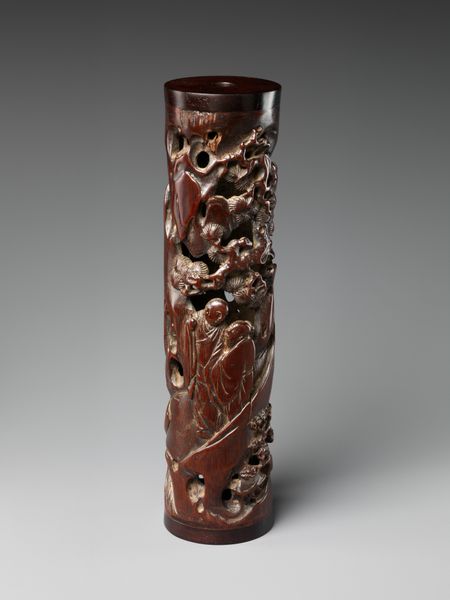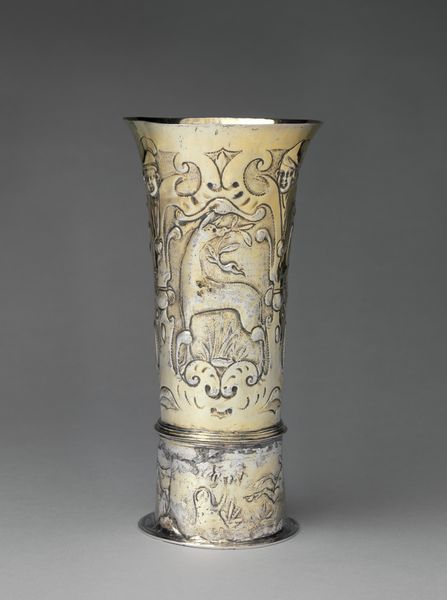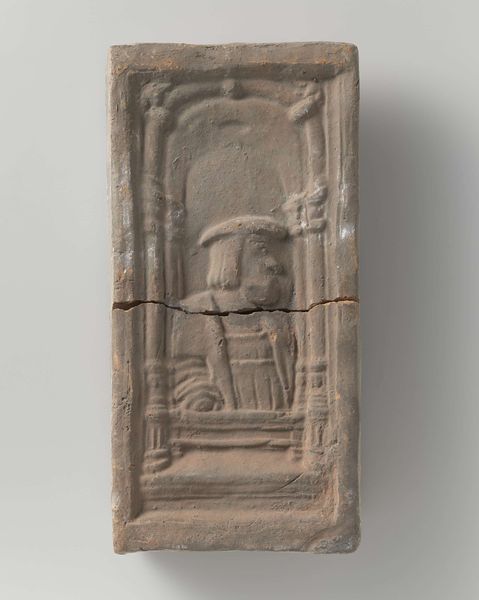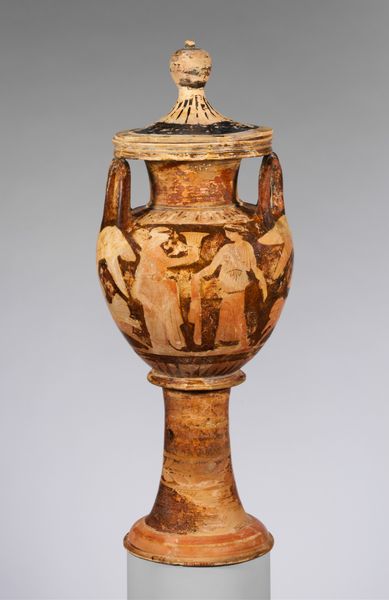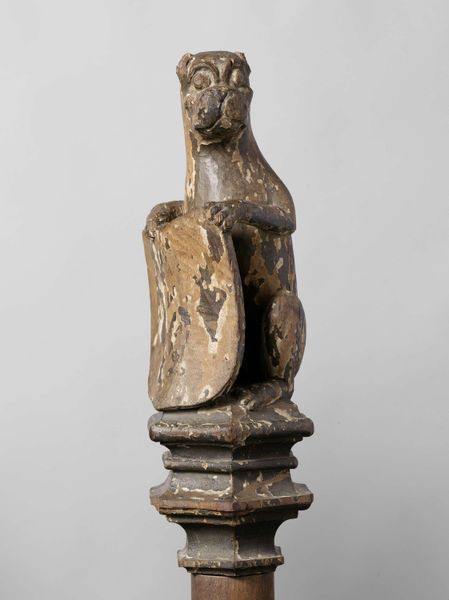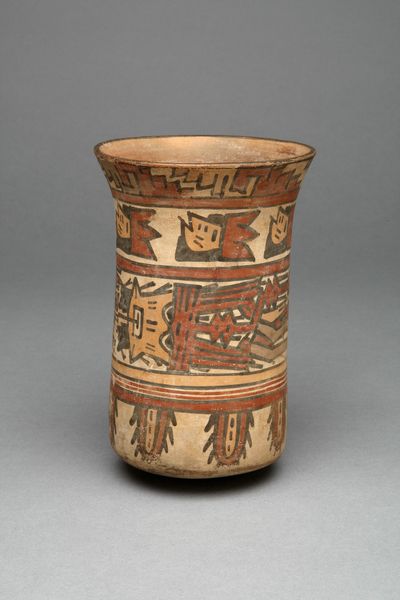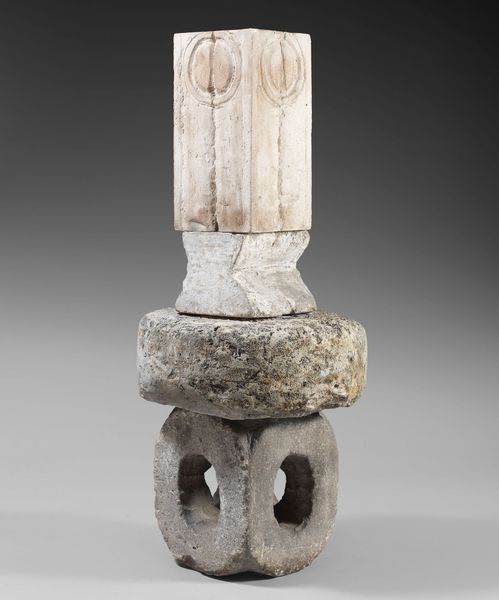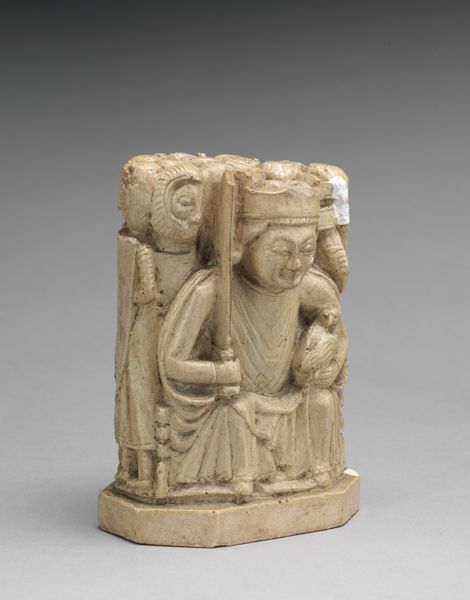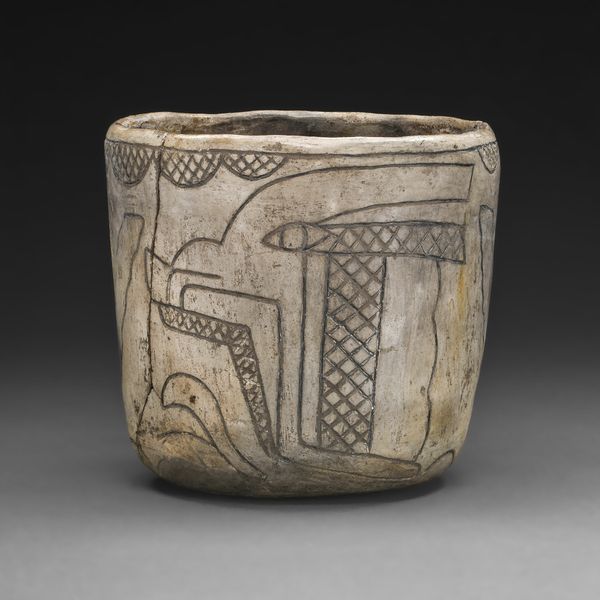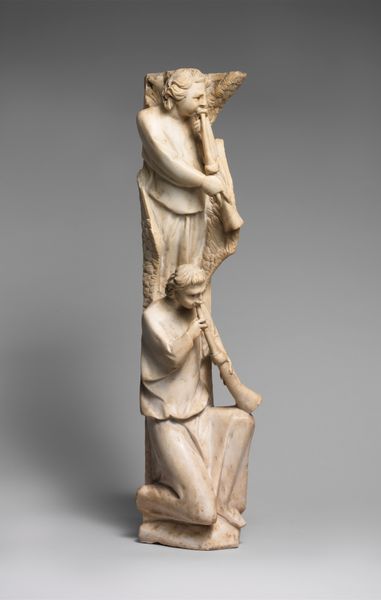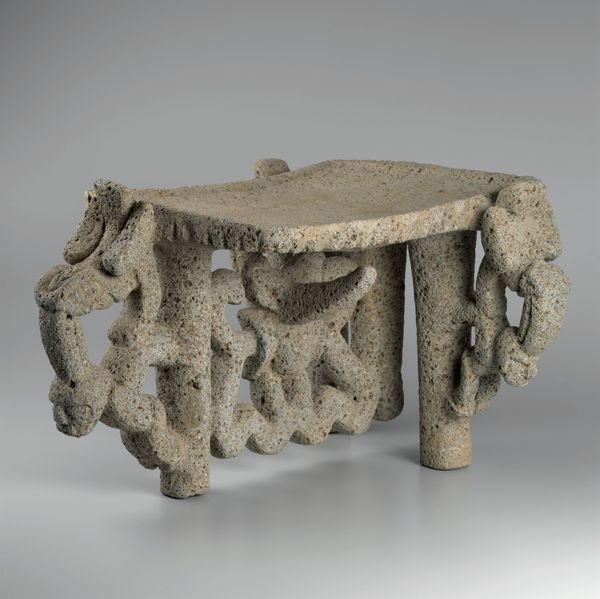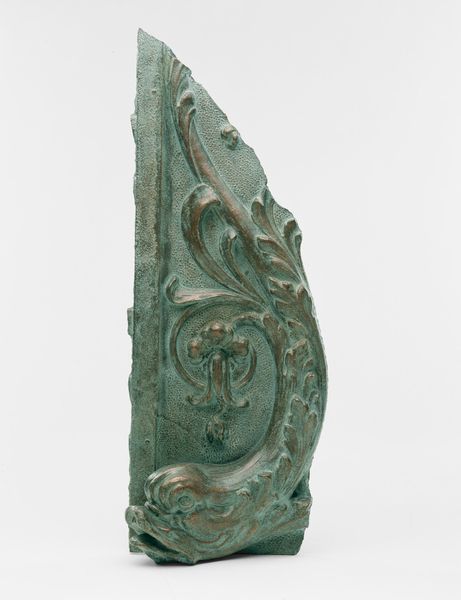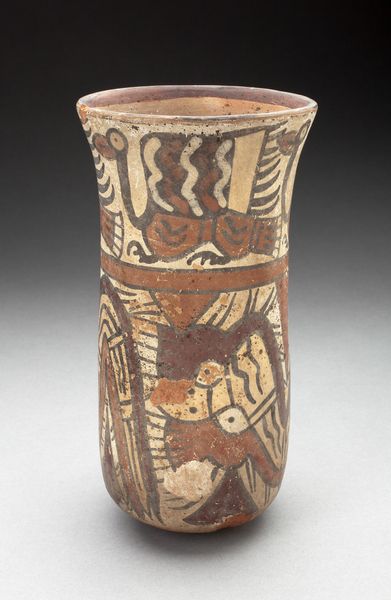
ceramic, sculpture
#
art-nouveau
#
sculpture
#
ceramic
#
sculpture
#
decorative-art
Dimensions: Overall (confirmed): 13 3/4 × 5 × 4 1/4 in., 9.1 lb. (34.9 × 12.7 × 10.8 cm, 4.1 kg)
Copyright: Public Domain
Curator: Standing before us is an Art Nouveau vase, created between 1885 and 1905, by the artist Georges Hoentschel. It resides here at the Metropolitan Museum of Art. Editor: It feels substantial. The carving has such a crisp geometry despite the organic leaf motifs. The ceramic has a calming, pale green color. Curator: The use of ceramic, a humble material, elevated to fine art, is characteristic of the Art Nouveau movement, aiming to integrate art into everyday life. Hoentschel, deeply involved in the decorative arts, was at the forefront of the movement in France. Editor: The stylized maple leaves speak volumes. The maple leaf often symbolizes resilience and balance, but here they feel somewhat trapped within these rigid borders. Almost like nature trying to reclaim some imposed space. Curator: Indeed, the vase captures a tension present in the Art Nouveau aesthetic itself, an industrial society’s longing for nature that never truly relinquishes the grid. Its function as a display vessel is also worth mentioning: it isn't so much made for practical use as to exhibit artistic beauty. This raises it to the status of artwork and it gains new meanings when placed within exhibitions in major institutions such as the Met. Editor: It certainly transcends its mere functionality. Considering this vase was created during the Belle Époque, a period of optimism before the first world war, is the tension we see premonitory of what’s to come? Curator: Fascinating point. One might interpret it as the anxieties present within the surface of opulence. An attempt to root to nature amid urban development, and maybe a fear to leave the roots behind. It’s really compelling, don’t you think? Editor: It truly is. A dialogue between man and nature rendered beautifully in ceramic, framed by history and symbolic undertones. Curator: Absolutely. It prompts us to reflect on what we expect art to mean to the masses and its legacy.
Comments
No comments
Be the first to comment and join the conversation on the ultimate creative platform.
